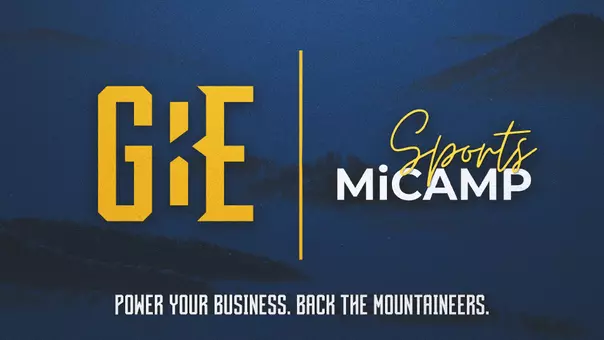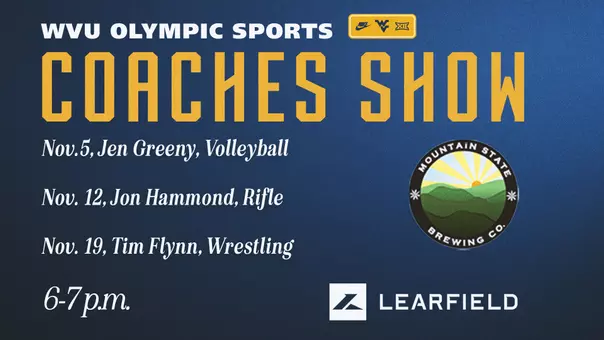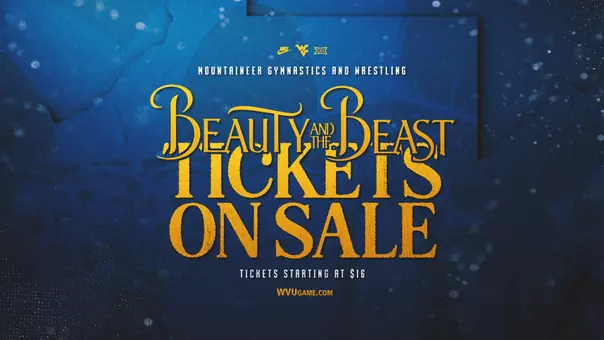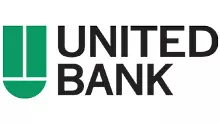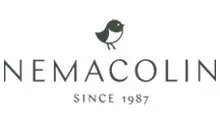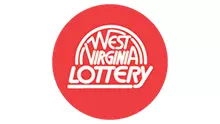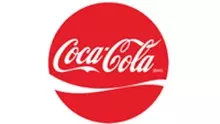25 Years of ESPN
October 19, 2004 10:24 AM | General
October 20, 2004
MORGANTOWN, W.Va. -- At 7 p.m. Eastern Time on Friday, Sept. 7, 1979, a new sports only network called ESPN beamed up its first program to satellite, a half-hour’s worth of sports news that made its way into a modest number of homes, mostly along the East Coast.
 |
||
| ESPN's Dave Ryan interviews West Virginia coach Rich Rodriguez after the Maryland game earlier this season.
All-Pro Photography/Dale Sparks photo |
Following the half hour of news and a half-hour preview of the NCAA basketball season, St. John’s faced Oral Roberts and Michigan State played Princeton in the Joe Lapchick Memorial Basketball Tournament. After that, another half hour of news and a tape-delay airing of the NCAA Division II football playoffs took those still tuned in well into Saturday morning.
Then there was more sports news; table tennis, soccer, college hockey, Soviet women playing basketball for the University of Tennessee, and even more table tennis to watch.
Twenty five years later, ESPN has changed the way we watch sports in America. The network has grown into a multi-billion dollar corporation that encompasses more than 40 business entities. In fact, based on an on-going study of “brand resonance” among 138 national brands ESPN was ranked No. 1 among men, ahead of Fidelity Investments and Hersheys.
According to the network, almost every American has at least heard of ESPN and 87 percent have admitted to watching one of its programs.
During prime time at any moment, more than one million households are tuned in to either ESPN or ESPN2 and each week more than 94 million Americans watch, listen, read or log on to ESPN branded media.
This is a remarkable achievement for William Rasmussen, a former TV news director and producer in Springfield, Mass., who later became communications director and play by play man for the now defunct Hartford Whalers professional hockey team. Rasmussen simply wanted to start a network that could air University of Connecticut sports and Whalers games to cable TV stations in Connecticut.
Rasmussen got RCA Cable to go for his idea, and they told him for just a little more money he could reach the entire country. Rasmussen convinced Getty Oil to come up with about 85 percent of the $1 million needed to purchase satellite time and ESPN was in business.
Anheuser Busch, Inc., was the first big-name sponsor to come aboard and paid $1.4 million to advertise Budweiser beer. According to a 1979 New York Times story, one of the first ESPN events Budweiser sponsored was a slo-pitch softball game that featured the Louisville Bourbons playing the Milwaukee Schlitz. Budweiser never said a word about it.
Rugby, Australian Rules football, spelling bees, chess tournaments and synchronized swimming soon gave way to live college football and men’s basketball, professional football in 1987, and major league baseball in 1990.
In 1993, a second ESPN network ESPN2 was launched in 10 million homes after ESPN Radio made its debut a year previously. ESPNET SportsZone (now ESPN.com) was introduced in 1995, ESPN News followed in 1996, ESPN The Magazine was created in 1998, ESPN High Definition and ESPN Pay-Per-View were started in 2003 and next spring, an ESPN all-college network will hit the air.
There are consumer products like home videos, digital games, compact discs and books, merchandise from the web site and team store, restaurants, sports polls, emerging technologies like Video on Demand, Broadband, Interactive TV and ESPN HD, wireless scores, headlines and games, and special events like the ESPY Awards, X Games, Winter X Games and the Jimmy V Classic.
The network has even created feature movie presentations like Season on the Brink in 2002 based on the best selling book by John Feinstein profiling the Indiana University men’s basketball team. Most recently, Hustle, a chronicle of Pete Rose’s gambling problems in baseball, aired earlier this fall.
And while ESPN has been known for pushing the envelope its critics say it sometimes goes over the edge.
The National Football League used considerable leverage from its television contract with the network to have the series Playmakers canceled because the show depicted a fictional team featuring plots of drug use, marital infidelity, racism and homophobia.
ESPN also miscalculated when it added conservative radio talk show host Rush Limbaugh to its NFL pre-game show. Limbaugh got the network into hot water when he made racially insensitive remarks about Philadelphia Eagles quarterback Donovan McNabb that eventually led to his resignation.
Local cable companies blame ESPN as the reason for skyrocketing rates, claiming ESPN has raised it charges by 20 percent annually over the last five years which has translated into a $2.61 increase for regular cable customers, according to Cox Communications, Inc., in 2003.
Philadelphia-based Comcast Corp., the No. 1 U.S. cable company, says rising programming costs from ESPN are the primary culprit for its price increases.
“Clearly, ESPN’s 20 percent increases are disproportionate to the economic reality of the world today,” Cox said in a statement issued last year. “If we raise our rates 20 percent a year, what do you think our customers would say?”
ESPN has had a long standing relationship with West Virginia University dating back to its first telecast of a Mountaineer athletic event: a tape-delay broadcast of the West Virginia-Oklahoma football game in Norman, Okla., in 1982.
 |
||
| The late Tom Mees developed a relationship with MSN's Mike Parsons while the two were working in Tallahasse, Fla.
ESPN photo |
West Virginia’s first live broadcast on ESPN came in 1984 when the Mountaineers defeated Penn State, 17-14 in a game that drew a 6.3 rating (representing the total percentage of households in the country watching the game). It is still, 20 years later, the highest rated West Virginia game ever to air on ESPN.
In all, 53 West Virginia football games and probably half as many men’s basketball games have aired on either ESPN or ESPN2 heading into Thursday night’s game against Syracuse.
Through its Mountaineer Sports Network, West Virginia has always maintained special ties with ESPN. MSN executive producer Mike Parsons was indirectly involved in the late Tom Mees getting hired as one of the original SportsCenter anchors when the network was launched in 1979.
Parsons knew Mees from his days working at Florida State as an assistant sports information director. Mees was sports anchor at a Tallahassee, Fla., TV station that also was doing some play by play work for replayed FSW football games.
Tom was interested in getting more involved in play by play and Parsons suggested that Mees send a tape to the new sports network in Bristol, Conn., that was planning to do a television replay of the Florida State-Arizona State game played in Orlando, Fla.
Mees took Parsons’ advice and instead of getting the play by play job, he was hired to join George Grande, Bob Ley and Chris Berman as one of the first four SportsCenter anchors.
By the mid-1980s, Mees was eager to keep his feet wet in the play by play business and he hooked up once again with Parsons to do West Virginia football replays for MSN.
“He would do the late SportsCenter on Friday night, get up early Saturday morning and catch a flight out of Hartford for Pittsburgh and then drive down to Morgantown to do the games,” Parsons recalled. “Then he would get up early Sunday morning and fly back to Hartford.”
Tony Caridi, now MSN’s radio play by play man, got his start in the business alongside Mees. “When I started I was doing color and I did it with him for one year and then we started to share a game at a time; one of us would do color and one of us would do play by play,” Caridi said.
According to Tony, Mees grew into a big West Virginia Mountaineer fan.
“I’ll never forget we were playing Penn State in 1987 and we had them,” Caridi said. “Major put together this incredible sideline to sideline run and then he fired the ball downfield to Craig Taylor that would have sealed the game.
“Tom and I were slapping high-fives as the play was unfolding in the booth and then we saw the flag and they called John Stroia on an ineligible man downfield penalty,” Caridi said. “(Tom) really became a huge Mountaineer fan during his time broadcasting those tape-delay games.”
But the workload on Mees became too great when ESPN was in the midst of its big expansion in the late 1980s and he left the MSN broadcasts after the 1987 season. Mees tragically died in the summer of 1996 in a swimming accident at his home in Southington, Conn.
MSN has sent others to the network in important support roles. Wheeling native Chuck Scatterday got his start at WVU working at the student radio station U-92 and was one of the catalysts in helping the station acquire exclusive broadcasting rights for WVU women’s basketball. Scatterday later spent two years as a graduate assistant for the Mountaineer Sports Network before taking a job with ESPN in 1993.
 |
||
| Chuck Scatterday, pictured to the right of ESPN personality Chris Berman, turned a two-year graduate assistant position at MSN into a full-time job at ESPN.
Submitted photo |
Today he is broadcast manager for remote operations and is in charge of a staff that takes care of all studio elements during events not related to SportsCenter. Specifically, Chuck works with Chris Berman on the Sunday night NFL halftime show “The Fastest Three Minutes.”
“We follow story lines and breaking news,” Scatterday said. “Basically when SportsCenter is not on we are the support studio for those events.”
Scatterday admits he is an avid Mountaineer fan and often slips in West Virginia highlights when it is appropriate. Earlier this year Scatterday noticed a faux pas on the web site when the headline for the West Virginia-Maryland game read: UWV Takes Terps in Overtime.
Scatterday immediately got on the telephone. “Guys, you’ve got to change that because that is now how that school is known,” he said.
“Are you sure?”
“Trust me on this one.” Scatterday answered. After a couple of minutes Chuck got back on the web site to check out the change and noticed that U-W-V had been changed to W-V-A. Scatterday picked up the phone once more: “Guys, I went to school there and it’s W-V-U Takes the Terps in Overtime! It’s not a huge school, but the people that care down there are going to be really mad.”
Charlie Moynihan, now ESPN bureau producer for West Coast operations, spent a year as a graduate assistant with MSN in 1992. Moynihan went to Emerson College in Boston before making the trip down to Morgantown to get what he calls “one of the best experiences of my life.”
“I packed a 15-foot Ryder truck and car carrier and drove through Connecticut, New York, Pennsylvania all the way down to Cumberland, Md. Eventually I made it to Morgantown with a pocket full of cash and that was it,” he said.
Moynihan had always been enamored with ESPN and was desperate to get an interview. One of Moynihan’s professors at Emerson knew Al Jaffe, who was in charge of hiring talent and production personnel at ESPN. Moynihan literally stalked Jaffe during the year he was working for MSN.
“I remember one night Greg Shock and I were feeding highlights of the West Virginia-Duquesne basketball game in March and at the end of the satellite feed I put up a full-screen graphic that read Mr. Jaffe, please hire me: Charlie Moynihan. I also put up my phone number.”
About three weeks later Moynihan got a job in Bristol as a production assistant making $7.50 an hour and has since been promoted four times, working on such shows as Up Close and Unscripted with Chris Connelly. Today, Moynihan, who lives in San Francisco, travels around the country doing pre and post-game coverage for major league baseball and the NFL. He works with all of ESPN’s on-air talent including Peter Gammons and John Clayton.
“I do quite a bit of traveling,” he said. “I’m probably on the road about 175 to 200 days a year. Sometimes you wake up and you don’t know what day it is, what time zone you’re in or where you’re at for that matter.”
Michael Freer, a researcher for ESPN News, doesn’t have that problem. Freer got his journalism degree from WVU in 1992 and worked as a student assistant in the Sports Communications Office all four years at West Virginia.
Freer got a job out of college working for a weekly newspaper in Warrenton, Va., and while there he saw an ad about ESPN starting up a new channel called ESPN News.
“I sent my resume up there and they called me back and I did an interview and got hired,” Freer said.
Freer has done research for the show now called NBA Fast Break for four years, he worked for NFL Tonight and then returned to ESPN News when they changed formats.
“There are a number of different shows that go on during the evening on ESPN News. There is about a two-hour block in the evening with two sets of anchors and once they’re done they’ll shift off to another set of anchors,” Freer said. “I’m involved with a couple of shows in the evening and there is another researcher who works on the shows that I don’t work on.”
Freer sometimes gets calls from the producer of the show Cold Pizza and also sometimes receives frantic calls from producers at remote locations looking for quick tidbits and facts.
“I never realized the value of 15 seconds,” Freer said. “You can get a lot done in 15 seconds when you need to coming out of a commercial break.”
Ingenuity is often a prerequisite for the job. Freer frequently has to come up with graphics that put certain achievements into perspective like Jerry Rice’s pass receiving streak that came to an end earlier this year.
Ingenuity is a trait also shared by Chad Mayfield, a Parsons, W.Va., native who spent two years at WVU before heading off to the Air Force in 1990.
Mayfield is the manager of ESPN’s internal web services group and landed a job at ESPN through a headhunter while he was still in the Air Force.
“I was a computer programmer in the Air Force so I was in the same technical field and it just so happened that when I was leaving, ESPN was doing the exact same things that I was doing in the Air Force,” Mayfield said.
Mayfield has now been at ESPN for the last seven years and his shop does all of the corporate intranet and non-commercial extranet sites.
“I manage a whole group of web developers,” Mayfield said. “It’s not just static HTML type stuff … it’s actual Java applications that interact with a Oracle database.”
Put in plain language, Mayfield’s department is responsible for acquiring data and information used by the affiliate marketing and media departments.
“We actually have an application we’ve developed to help support the X Games and the Great Outdoor Games,” said Mayfield, who owns a farm near Bruceton Mills. “We do all of the check hunting, tax withholding and interfacing with the financial systems.”
Mayfield says he’s not the person responsible for fixing Stuart Scott’s email if it crashes, though the MIS department he works in would take that call. Like all of those who work at ESPN, Mayfield enjoys being part of an organization that continues to be on the cutting edge.
“ESPN is a fantastic company and the folks I work with are phenomenal; very bright, very much a team … almost a family atmosphere.
“I’m a technical person working in MIS and this is very cutting edge stuff we’re doing here,” Mayfield continued. “ESPN technical folks have a reputation for excellence and we do work our tails off. It’s not because it’s required of us but because it’s a matter of pride.”
In addition to Scatterday, Moynihan, Freer and Mayfield, there are others with close West Virginia ties that have either been involved with or are still a part of the network.
Clarksburg’s Mike Patrick is one of ESPN’s top play by play talents who unabashedly touts his West Virginia ties and his admiration for the Mountaineer football program.
Sideline reporter Dave Ryan cut his teeth at WAJR and later WBOY before making it big. Dave Pasch also started at WAJR and is doing college football play by play for ESPN in addition to being the radio voice of the Arizona Cardinals.
Longtime WVU employee Alex Gavula is a freelance audio technician doing ESPN Sunday Night Baseball and Sunday Night Football. According to Scatterday, Weirton’s Anthony Bailey is one of the managers of the clock and score department (the little bug you see on the screen when you watch games).
WVU graduate Candi Roby spent a number of years working at ESPN and now is employed at a public relations firm in Washington, D.C. Pat Sergent spent a couple of years at ESPN before returning to Morgantown to work for WVU and West Virginia Public Television.
Tony Caridi has done some basketball play by play for ESPN in the past, too.
“Just about everything we do is a challenge,” says Mayfield. “We’re always trying to take it to the next level.”
Mountaineer football fans not at the Syracuse game will witness that first-hand Thursday night.
